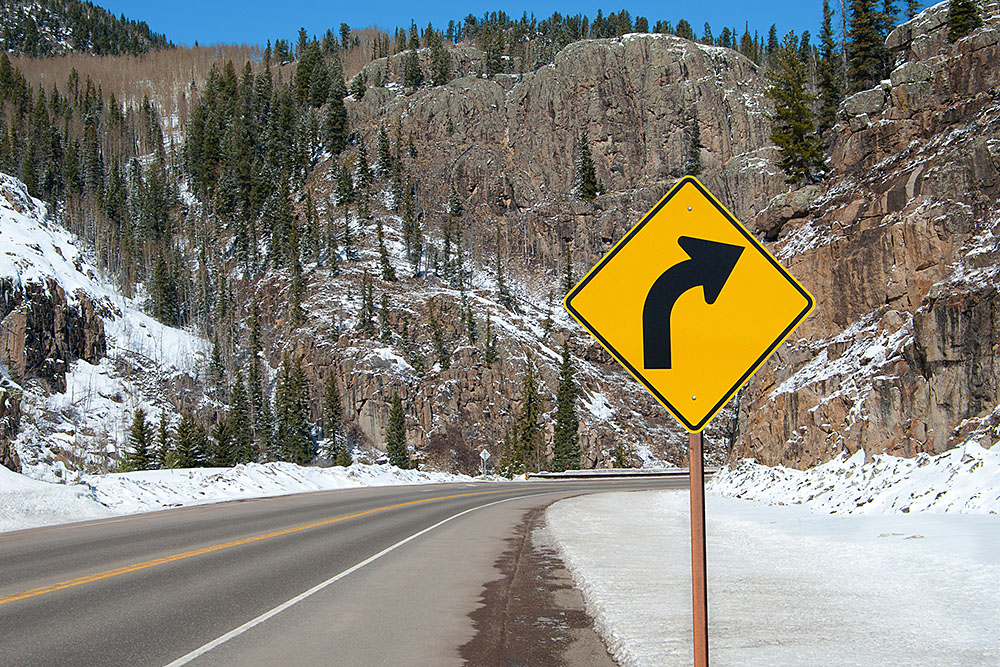Watch For These Common Autumn Brake Problems

Not everyone experiences harsh winter weather, but drivers who do intimately know how easily snow and water gets into your brake pads, and the damage it can do.
Even those drivers in temperate climates should consider having their brakes inspected, especially now that summer is over.
For drivers who experience brutal winters or visit areas prone to snow, problems start when the temperature drops below freezing. Snow caked in your wheel wells can make grinding and squealing noises, according to Wagner, a manufacturer of brake parts.
Wagner says accumulated moisture can create a superficial layer of rust on brake pads, but that build-up typically sloughs off after applying the brakes a few times while driving.
Brakes that grind, squeal or thump require expert inspection as soon as possible, the company said. As ignoring small issues can often turn into a major repair bill.
“Something like a vibrating brake pedal is a sign to head over to a service station,” said Tony Molla, vice president of the Automotive Service Association, a Texas-based nonprofit devoted to vehicle maintenance.
Friction so integral to the braking process eventually degrades the system’s shoes, fluid and hoses. The telltale signs that the brakes are struggling--squealing during stopping or a spongy brake pedal--can happen any time of year.
Molla urges drivers to trust their gut and to be safe rather than sorry.
“Don’t have to wait until your brake icon lights,” he said. “A routine inspection before winter roots out potential problems.”
Squealing often doubles as a brake’s death rattle, but it’s not the only way of telling that the system is failing or in need of attention. Reduced stopping power--taking longer than usual to bring the vehicle to a full stop--is another giveaway that your brakes need attention.
Brake manufacturers and driving safety experts offer the following advice about what to ask for during your post-summer brake inspection:
- Wear and tear. Have your mechanic look for pad wear, leaks, a worn or scratched brake disc.
- Mileage. Consult the owner’s manual. Longevity varies by how and where you drive. For example, stop-and-go city wears out brake pads faster than freeway driving.
- Quality parts. Use replacement brake pads that meet or exceed the manufacturer’s recommendations. Pad quality varies depending on their composite materials—metal fibers, rubber compounds, silicate and resins.
- Brake discs. Extremely worn brakes can scratch or gouge the disc and reduce braking effectiveness. Most brake replacement involves smoothing out the rotor surface to improve braking.
Below are some tips for removing ice, snow and road salts from your wheels, courtesy Adam Bateman of Wizards Polish.
Rinse snow and road salt off brake parts, wheel wells and undercarriage to prevent corrosion.
Clean your wheels every other week, especially if you live in snow. At a minimum clean wheels every time you wash the vehicle exterior.
Choose a cleaner that is acid-free. A general rule: If it is safe to use on vehicle paint, it is safe to use on wheels.
Cleaning your wheels during the winter is less about making your car look great and more about preventing corrosion and rust from taking hold. Yet, great looking wheels enhance the appeal and value of your vehicle.
Molla said a brake inspection generally includes the following:
- Check the master cylinder. This reservoir beneath the hood stores the brake fluid and needs to be periodically checked for leaks and wear.
- Inspect brake hoses. These hoses carry fluid to and from various braking components. Underperforming hoses create an inefficient stopping system.
- Inspect brake fluid lines. Brakes are a hydraulic system that requires fluid to function. Leaking or damaged brake lines degrade the whole system’s ability to function.
- Look for wear and tear. Friction and heat can wear unevenly on brake parts and contaminate brake fluid.
- Test the parking brake. Ask your service advisor to check the system to make sure it’s working properly.